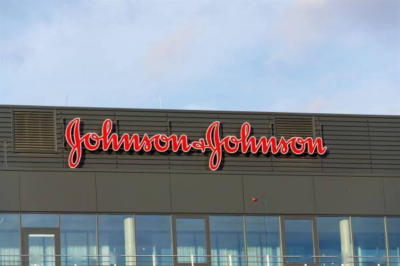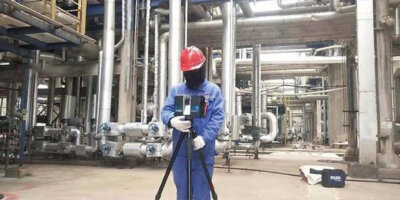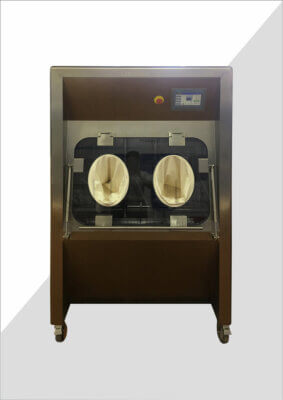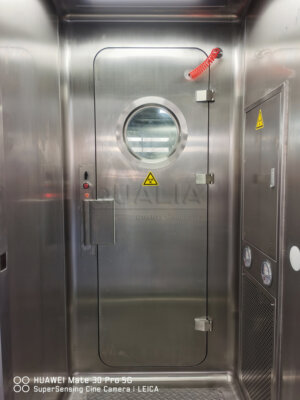In today's world, where health and safety are paramount concerns, decontamination cleaning has become an essential process across various industries and settings. From healthcare facilities to industrial sites, the need for effective decontamination has never been more critical. This article delves into the intricacies of decontamination cleaning, exploring its importance, methods, and applications in different contexts.
Decontamination cleaning is a comprehensive process that involves the removal or neutralization of hazardous substances, including biological, chemical, and radiological contaminants. It goes beyond regular cleaning, employing specialized techniques and products to ensure surfaces and objects are free from harmful agents. This process is crucial in preventing the spread of infections, maintaining workplace safety, and protecting public health.
As we navigate through the complexities of decontamination cleaning, we'll explore the various methods used, the industries that rely heavily on this process, and the latest advancements in decontamination technology. We'll also discuss the importance of proper training and safety protocols for those performing decontamination tasks.
"Decontamination cleaning is a critical process that ensures the safety and well-being of individuals in various environments, from healthcare facilities to industrial settings. It involves the systematic removal or neutralization of harmful substances, significantly reducing the risk of contamination and disease transmission."
What are the key principles of decontamination cleaning?
Decontamination cleaning is founded on several key principles that ensure its effectiveness and safety. These principles guide the process from start to finish, ensuring that all potential hazards are addressed thoroughly.
The first principle is thoroughness. Decontamination cleaning must be comprehensive, leaving no surface or area untreated. This means paying attention to often-overlooked spaces and hard-to-reach areas where contaminants might hide.
Another crucial principle is the use of appropriate cleaning agents and techniques. Different contaminants require different approaches, and using the right tools and chemicals is essential for effective decontamination.
"The effectiveness of decontamination cleaning relies heavily on adhering to key principles such as thoroughness, appropriate chemical selection, and proper technique application. These principles ensure that all potential hazards are adequately addressed, minimizing the risk of residual contamination."
| Principle | Description |
|---|---|
| Thoroughness | Comprehensive cleaning of all surfaces and areas |
| Appropriate Agents | Use of specific chemicals for different contaminants |
| Proper Techniques | Application of correct cleaning methods |
| Safety | Adherence to safety protocols during the process |
How does the decontamination cleaning process work?
The decontamination cleaning process typically follows a structured approach to ensure maximum effectiveness. It begins with a thorough assessment of the contaminated area to determine the type and extent of contamination present.
Once the assessment is complete, the next step is the physical removal of visible contaminants. This might involve scrubbing, wiping, or vacuuming, depending on the nature of the contamination and the surface being cleaned.
After physical cleaning, chemical disinfection is often employed to neutralize any remaining contaminants. This step may involve the use of specialized disinfectants or sanitizers, applied according to manufacturer instructions and safety guidelines.
"The decontamination cleaning process is a multi-step procedure that combines physical cleaning with chemical disinfection. This comprehensive approach ensures that both visible contaminants and microscopic pathogens are effectively removed or neutralized, creating a safe and hygienic environment."
| Step | Action |
|---|---|
| Assessment | Evaluate type and extent of contamination |
| Physical Cleaning | Remove visible contaminants |
| Chemical Disinfection | Apply appropriate disinfectants |
| Verification | Confirm effectiveness of cleaning process |
What are the different types of decontamination cleaning methods?
Decontamination cleaning methods vary depending on the type of contamination and the environment in which they are applied. Some of the most common methods include chemical decontamination, physical decontamination, and thermal decontamination.
Chemical decontamination involves the use of specific chemicals to neutralize or remove contaminants. This method is particularly effective against biological and chemical hazards. QUALIA, a leading provider of water treatment solutions, offers an Effluent Decontamination System (EDS) for BSL-2, 3, and 4 liquid waste, which utilizes chemical decontamination principles to ensure safe disposal of hazardous biological waste.
Physical decontamination methods include techniques such as scrubbing, wiping, and HEPA filtration. These methods are often used in conjunction with chemical decontamination for more thorough cleaning.
"The choice of decontamination cleaning method depends on various factors, including the nature of the contaminant, the type of surface, and the level of decontamination required. A combination of methods is often employed to ensure comprehensive decontamination."
| Method | Application |
|---|---|
| Chemical | Neutralization of biological and chemical hazards |
| Physical | Removal of visible contaminants and particles |
| Thermal | Sterilization through high temperatures |
Why is proper training essential for decontamination cleaning?
Proper training is crucial for anyone involved in decontamination cleaning. The process often involves handling hazardous materials and using potentially dangerous chemicals, making safety a top priority.
Training programs should cover a range of topics, including the proper use of personal protective equipment (PPE), handling and disposal of contaminated materials, and the correct application of cleaning agents and techniques.
Moreover, training ensures that decontamination procedures are carried out consistently and effectively, reducing the risk of incomplete decontamination or cross-contamination.
"Comprehensive training is essential for ensuring the safety of decontamination cleaning personnel and the effectiveness of the cleaning process. It equips workers with the knowledge and skills necessary to handle hazardous materials safely and perform decontamination tasks efficiently."
| Training Component | Purpose |
|---|---|
| PPE Usage | Ensure personal safety during cleaning |
| Chemical Handling | Proper use and disposal of cleaning agents |
| Decontamination Techniques | Correct application of cleaning methods |
| Safety Protocols | Adherence to safety guidelines and regulations |
What industries rely heavily on decontamination cleaning?
Decontamination cleaning is critical in various industries where maintaining a sterile or contaminant-free environment is essential. The healthcare industry is perhaps the most prominent example, with hospitals and medical facilities relying on rigorous decontamination procedures to prevent the spread of infections.
The pharmaceutical and biotechnology industries also depend heavily on decontamination cleaning to maintain the integrity of their products and research environments. In these settings, even minor contamination can have significant consequences.
Other industries that require regular decontamination include food processing, where preventing foodborne illnesses is paramount, and hazardous waste management, where proper decontamination is crucial for environmental and public safety.
"Decontamination cleaning plays a vital role in numerous industries, from healthcare and pharmaceuticals to food processing and waste management. In each of these sectors, effective decontamination is essential for maintaining safety standards, protecting public health, and ensuring product integrity."
| Industry | Decontamination Focus |
|---|---|
| Healthcare | Preventing spread of infections |
| Pharmaceuticals | Maintaining product integrity |
| Food Processing | Preventing foodborne illnesses |
| Waste Management | Ensuring safe handling of hazardous materials |
How has technology advanced decontamination cleaning practices?
Technological advancements have significantly improved decontamination cleaning practices in recent years. One notable innovation is the development of automated decontamination systems, which can perform thorough cleaning with minimal human intervention.
UV-C light technology has also gained popularity as a non-chemical method of decontamination. This technology uses short-wavelength ultraviolet light to kill or inactivate microorganisms by disrupting their DNA.
Another technological advancement is the use of hydrogen peroxide vapor systems for room decontamination. These systems can effectively decontaminate entire rooms, reaching areas that might be missed in manual cleaning processes.
"Technological innovations have revolutionized decontamination cleaning practices, introducing more efficient, thorough, and safer methods. From automated systems to UV-C light technology and hydrogen peroxide vapor, these advancements have significantly enhanced our ability to create and maintain contaminant-free environments."
| Technology | Application |
|---|---|
| Automated Systems | Thorough cleaning with minimal human intervention |
| UV-C Light | Non-chemical microbial decontamination |
| Hydrogen Peroxide Vapor | Whole-room decontamination |
What are the challenges in decontamination cleaning?
Despite advancements in technology and techniques, decontamination cleaning still faces several challenges. One of the primary challenges is the emergence of resistant microorganisms, which can survive traditional decontamination methods.
Another significant challenge is ensuring complete coverage during the cleaning process. Hard-to-reach areas or complex equipment can harbor contaminants if not properly addressed.
The potential health risks to cleaning personnel also present a challenge, particularly when dealing with highly hazardous materials. Ensuring proper safety measures and training is crucial to mitigate these risks.
"The field of decontamination cleaning continues to face challenges, from the emergence of resistant pathogens to ensuring comprehensive coverage and protecting the health of cleaning personnel. Addressing these challenges requires ongoing research, innovation, and a commitment to best practices in safety and training."
| Challenge | Impact |
|---|---|
| Resistant Microorganisms | Reduced effectiveness of traditional methods |
| Complete Coverage | Risk of residual contamination |
| Personnel Safety | Potential health risks to cleaning staff |
How can one ensure the effectiveness of decontamination cleaning?
Ensuring the effectiveness of decontamination cleaning requires a multi-faceted approach. First and foremost, it's crucial to follow established protocols and guidelines specific to the type of contamination and environment being cleaned.
Regular testing and verification are also essential. This may involve surface sampling, microbial cultures, or the use of fluorescent markers to check cleaning thoroughness.
Proper documentation of all cleaning procedures and results is another key aspect of ensuring effectiveness. This not only helps in maintaining consistent standards but also allows for the identification of areas that may need improvement.
"The effectiveness of decontamination cleaning relies on a combination of adherence to protocols, regular testing and verification, and thorough documentation. These practices ensure that cleaning standards are consistently met and provide a basis for continuous improvement in decontamination processes."
| Method | Purpose |
|---|---|
| Protocol Adherence | Ensure consistent application of best practices |
| Regular Testing | Verify effectiveness of cleaning procedures |
| Documentation | Maintain records for quality control and improvement |
In conclusion, decontamination cleaning is a critical process that plays a vital role in maintaining safety and hygiene across various industries. From healthcare facilities to industrial sites, the importance of effective decontamination cannot be overstated. As we've explored, the process involves a combination of thorough cleaning, appropriate use of chemicals, and adherence to strict protocols.
The field of decontamination cleaning continues to evolve, with technological advancements offering new and more efficient methods. However, challenges remain, particularly in the face of resistant microorganisms and the need for complete coverage in complex environments.
Proper training, consistent application of best practices, and regular verification of cleaning effectiveness are crucial elements in ensuring successful decontamination. As our understanding of contaminants and cleaning methods grows, so too does our ability to create and maintain safe, hygienic environments.
The importance of specialized equipment and solutions in this field cannot be overstated. Companies like QUALIA, with their Effluent Decontamination System (EDS) for BSL-2, 3, and 4 liquid waste, play a crucial role in advancing decontamination technology and ensuring the safe handling of hazardous materials.
As we move forward, the field of decontamination cleaning will undoubtedly continue to advance, driven by ongoing research, technological innovation, and a growing awareness of the importance of thorough decontamination in protecting public health and safety.
External Resources
Decontamination – Wikipedia – This article provides a comprehensive overview of decontamination, including its definition, methods such as physical cleaning, disinfection, and sterilization, and its applications in various fields like medical environments, food preparation, and environmental science.
Defining the Decontamination Process: Cleaning & Disinfection – Ecolab – This resource details the decontamination process, emphasizing the importance of cleaning as the first step, followed by disinfection. It categorizes disinfection into low, intermediate, and high levels and discusses their efficacy in reducing microbial contamination.
Decontamination & cleaning – ITW Reagents – This article explains the definitions of contamination and decontamination, and outlines various methods of decontamination including physical cleaning, ultrasonic cleaning, disinfection, and sterilization. It also highlights the importance of each step in achieving the desired level of cleanliness.
Principles of decontamination, sterilization, and disinfection – Select Agents – This guide provides detailed principles on decontamination, sterilization, and disinfection, particularly in the context of biosafety. It includes procedures for cleaning, disinfecting, and sterilizing materials and equipment, and emphasizes the importance of proper maintenance and documentation.
Decontamination – an overview | ScienceDirect Topics – This overview discusses decontamination as a pre-treatment procedure, especially in the context of radioactive and other hazardous materials. It covers various decontamination methods, including ultrasonic and electrochemical techniques, and their efficiencies.
Related Contents:
- Water Decontamination: Essential Methods for Clean, Safe Water
- Decontamination Systems: Safeguarding Health and Environment
- Effluent Decontamination: Safeguarding Our Environment
- Enhancing Facility Safety with Bag In Bag Out (BIBO) Systems: A Comprehensive Overview
- Bag In Bag Out Filters: The Ultimate Guide to Safe and Efficient Filter Replacement
- The Ultimate Guide to QUALIA’s Bag-in Bag-out (BIBO) System: Ensuring Safety and Efficiency in Hazardous Environments
- Innovative Containment Solutions: Bag-in Bag-out Systems Explained
- How Bag In Bag Out (BIBO) Systems Ensure Safety in Contaminant Removal
- Understanding the Bag In Bag Out (BIBO) System: Benefits and Applications






























